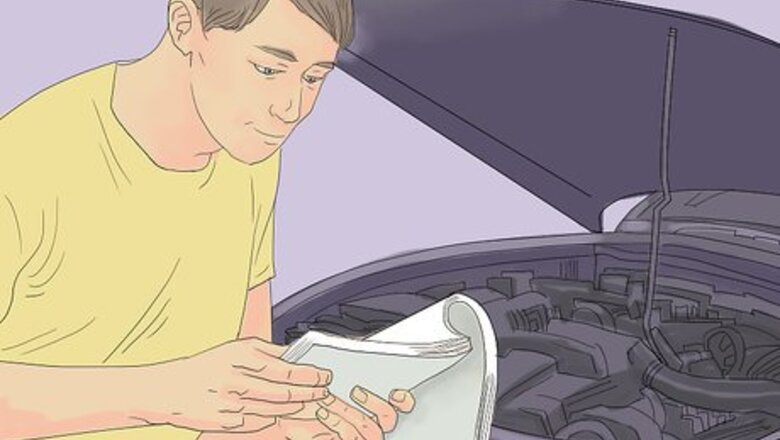
views
Calculating The Horsepower Of Your Car

Get your car’s torque numbers. Look under the “technical specs” section, or look for “torque” in the index of the owner’s manual, and it will give you the torque value. If you do not have the owner’s manual, try using a search engine to find your car’s torque. For instance, search “torque” and your car’s make, year, and model, and a helpful result should come up.

Find your car’s engine speed. This can also be found in your owner’s manual. If your owner’s manual does not have this information or if you do not have the manual, type your car’s make, year, and model in a search engine followed by the words “engine speed.” An online resource should have this number.
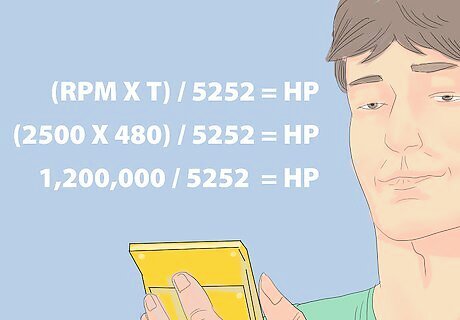
Multiply the torque by the engine speed. You will be using the formula (RPM * T) / 5252=HP, where RPM is the engine speed, T is the torque, and 5,252 is radians per second. The first calculation you want to do is multiply the torque and the engine speed. For example, a Porsche generates 480 of torque at 2,500RPM. Expressed in terms of the equation, that is (2500 * 480), which equals 1,200,000.
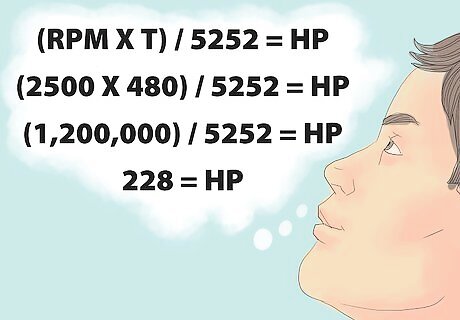
Divide the product by 5,252. The result is your car’s horsepower. In the Porsche example, 1,200,000/5252 = 228.48, so the Porsche has 228 horsepower.
Calculating the Horsepower of an Electric Motor

Figure out the current (I), efficiency (Eff), and voltage (V) of the motor. The voltage of the motor will be expressed in volts, the current will be expressed in amps, and the efficiency will be expressed as a percentage. The motor should have these units of measurement written on it.

Using the formula (V * I * Eff)/746=HP, determine your electric motor’s horsepower. Multiply the voltage, the current, and the efficiency, then divide the result by 746. For example, the horsepower of a 230v motor pulling 4 amps and having 82% efficiency would equal 1 horsepower. Convert the efficiency into a decimal before calculating. For example, a 82% efficiency would equal .82.
Calculating Your Own Horsepower

Weigh yourself. Find out how much you weigh in pounds. Write your weight down. If your scale uses kilograms, multiply this number by 2.2 to find your weight in pounds.

Find a stairway that is free from obstructions. You’ll be running up these stairs with a stopwatch, so try to find a stairway that is not frequently used.
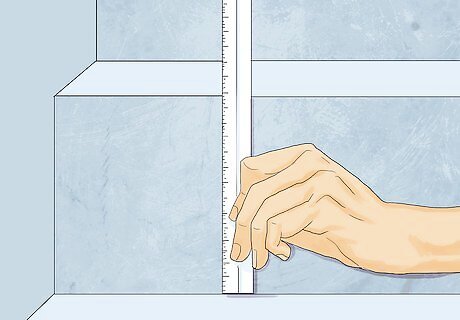
Measure the total height of the stairs. First, find the height of one stair in feet. Then, count how many stairs are in the stairwell you will be running up. Multiply these two numbers, and you will have the total height of the stairs. Write down the height. If your ruler uses meters, multiply the height by 3.28 to convert the measurement into feet.
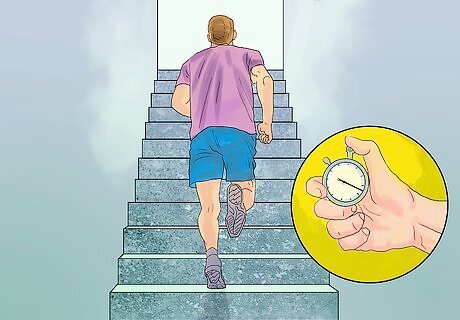
Time how long it takes you to run up the stairs. Get a running start, and when your foot lands on the first step, start your stopwatch. When both feet are on the top step, stop your stopwatch. Write down the duration of your climb to the top in seconds. Remember, there are 60 seconds in every minute.
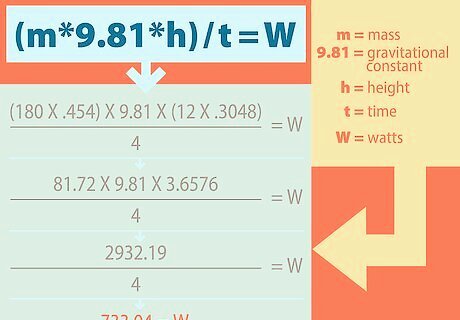
Use the formula (m*9.81*h)/t=HP to calculate your watts. In this instance, m = your weight, h = the height of staircase, 9.81 is the gravitational constant that must be taken into account, and t = time (in seconds) of your climb. The resulting number you get is expressed in watts. For example, if you weigh 180 lbs, and climb a 12-foot staircase in 4 seconds, that equals ((180 * .454) * 9.81 * (12 * .3048)) / 4 = 733 watts.

Calculate your Horsepower. Divide the number of Watts by 746 to find out your horsepower rating. This result is usually between 1-2 horsepower. In this example, we can use the formula (m*9.81*h)/t=HP because we are assuming that the only force acting on the runner is the force of gravity. Since the only force acting on the runner is the force of gravity, we know that all the horsepower the runner produces is used to push upward (vertically) against gravity. We are not accounting for friction, which would normally slow a runner down by exerting a force in the horizontal direction. In the real world, a runner would also have to push forward against friction, just as they would have to push upward against the force of gravity. You’d need a more complicated formula to account for friction and gravity together.

















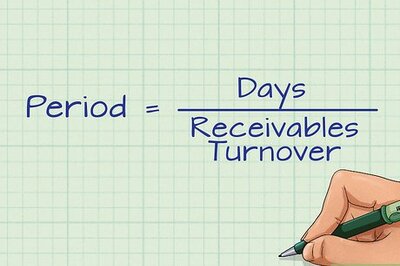
Comments
0 comment